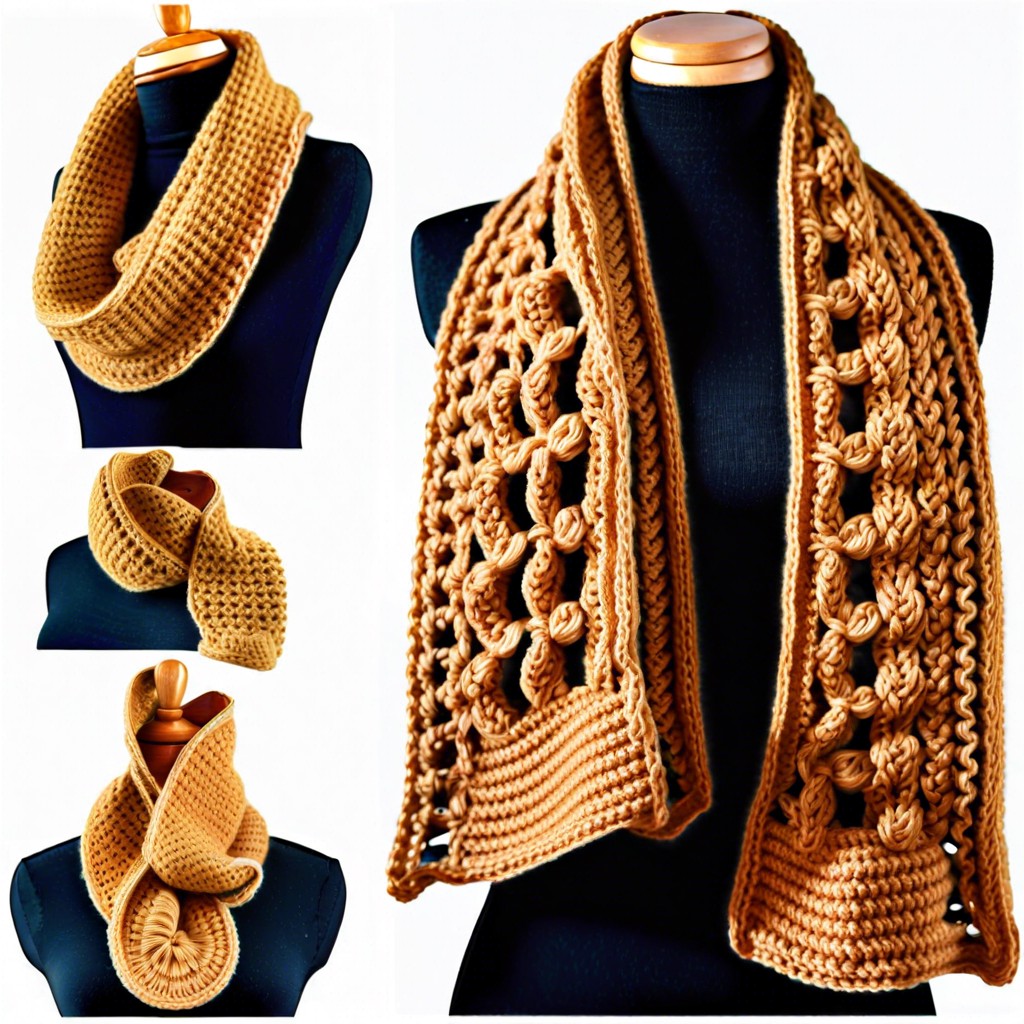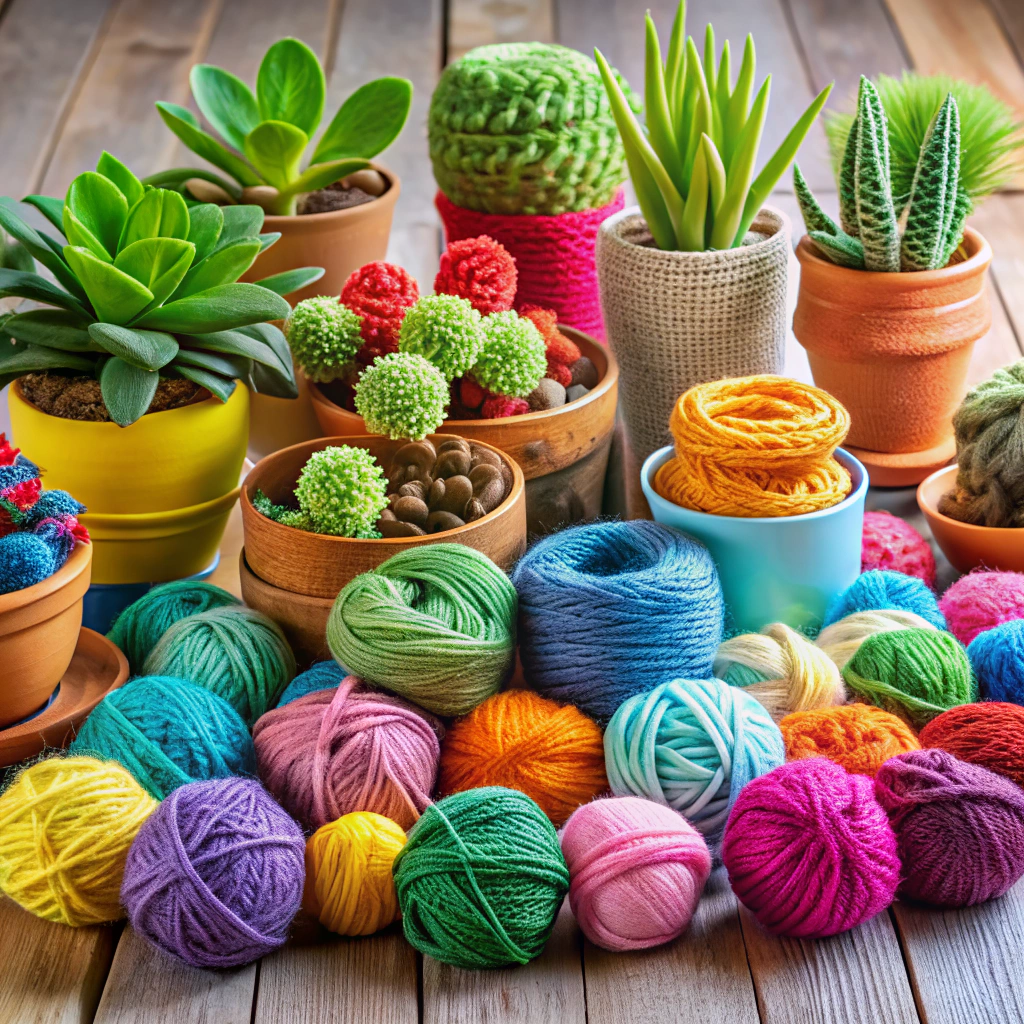Want to know how long your crochet scarf should be?
Ever wondered just how long that crochet scarf should be? Hold onto those hooks! From adult elegance to pint-sized perfection, the right length can transform any scarf from “meh” to marvelous. Dive into the perfect dimensions, style considerations, and yarn-tastic tips to ensure your next creation wraps up flawlessly—no missteps, just cozy, stylish glory. Get ready to crochet your way to scarf nirvana!
Key takeaways:
- Adult scarves: 60-70 inches for classic style.
- Children’s scarves: 36-40 inches for safety and comfort.
- Adjustable lengths: Consider wearer’s height and style.
- Scarf styles: Match length to style for best look.
- Stitch patterns impact: Adjust length for stitch type.
Ideal Length for Adult Scarves

Aiming for a classic, wearable length is key. For adults, most scarves range from 60 to 70 inches. Think of this as fashion’s Goldilocks zone—not too short, not too long, just right.
Consider drape and wrapping style. If your friend loves wrapping a scarf multiple times, go on the longer side. If they prefer a simple loop, shorter is better.
Include a bit of personal style. Someone who’s tall might appreciate a longer scarf for coverage, while a shorter person could feel overwhelmed by excess length.
And remember, scarves are like potato chips—nobody wants just one. Mix it up and create different lengths for different outfits and occasions.
Recommended Length for Children’s Scarves
For the wee ones, scarves should be just right – much like porridge in a famous bear-related tale. Keeping safety and comfort in mind, aim for a length around 36 to 40 inches. Here are some factors to consider:
Choose a length that allows the scarf to wrap around the neck once or twice but not drag on the ground. We don’t want them tripping during a game of tag.
Keep it snug but not too tight. Remember, kids need to move their heads without feeling like they’ve got a python wrapped around them.
Consider that kids grow faster than your yarn stash. A bit of extra length can allow for some growing room without turning the scarf into an accidental hanging hazard.
Finally, think about their activity level. Energetic kids might benefit from slightly shorter scarves that won’t catch on playground equipment.
Consider the Wearer’s Height
When pondering scarf length, take the wearer’s height into account. Taller folks typically need longer scarves, while shorter individuals can comfortably rock a more compact wrap.
A good rule of thumb:
If the recipient is taller than 6 feet, aim for a scarf around 70-80 inches long. For those under 5 feet 6 inches, a scarf of about 55-65 inches should suffice.
Think of it like Goldilocks’ porridge: you want it just right. Not tripping over it, not choking on it—perfect for their stature.
Also, remember: scarves aren’t one-size-fits-all, unless you’re gifting it to a giraffe. Context matters!
Use these guidelines to keep Aunt Edna from getting lost in a sea of yarn or Uncle Bob from looking like he’s borrowing a toddler’s accessory.
Factor in the Scarf Style
Some scarf styles demand specific lengths to look their best. Consider these points:
A classic, simple scarf can be long and flowing, often wrapped around the neck multiple times for that cozy, dramatic flair.
Infinity scarves, on the other hand, need to be just the right length to loop around your neck comfortably without looking like you’re wearing an oversized rubber band.
For a trendy, bulky scarf, you may want to go for a shorter length. It’s already hefty, so no need to make it longer than required.
A sophisticated cowl should fit snugly yet comfortably around the neck, aiming for a happy medium between suffocating and sagging.
Lastly, a fringed scarf looks best when you account for the extra length added by the fringe. No one wants fringe that drags on the ground.
Consider the look you’re going for and match the length to the style for a scarf that is both functional and fabulous.
Common Length Ranges
For most adult scarves, a length between 60 to 70 inches is popular. It’s the Goldilocks zone of scarf lengths—not too long, not too short. Wrap it around once, maybe twice, and voila! Instant coziness.
Children’s scarves should ideally be shorter, around 40 to 50 inches. Keeps the young adventurers from tripping over their own fashion statements.
Infinity scarves—those trendy loops of yarny goodness—often range from 55 to 65 inches in circumference. Measure once, crochet twice around, and you’ve got a fashion-forward loop ready to wear.
Remember, these are just guidelines. If you feel your scarf needs to be as long as Rapunzel’s hair or as short as a cat’s tail, go for it! Rules are meant to be crocheted around.
Adjusting Length for Different Stitch Patterns
Stitch patterns can shake things up in crochet land, especially with scarf length. Here are some quick insights:
Thick and textured stitches, like bobbles and popcorns, eat up more yarn and can shorten your scarf. You might need to add extra rows.
Delicate, lacy patterns stretch out nicely, often requiring fewer rows, but be careful of overdoing it—nobody wants a scarf that sweeps the floor.
Simple stitches, like single crochet, keep it straightforward. Stick to your planned length, but always measure as you go.
Changing stitch patterns mid-project? Smooth transitions ensure you don’t end up with a scarf that looks like it grew in two different climates.
Adjusting for stitch quirks can keep your scarf looking intentional and fab.
Impact of Yarn Type On Scarf Length
Thick, chunky yarn might scream “cozy,” but it sure loves to eat up more space in your scarf. So, if you’re using a bulky yarn, you might need fewer rows to reach your desired length. On the flip side, finer yarns, like lace weight, will need more stitches and rows to cover the same distance.
Also, different yarns have varying degrees of stretch. A stretchy yarn might create a longer scarf after blocking, while a sturdier yarn will maintain its original length more reliably. Choosing a yarn with a little give can add some unexpected length once it’s all worked up and worn.
Lastly, consider the drape. A yarn with a nice, fluid drape can make your scarf feel longer and more luxurious, while stiffer yarns might make it seem shorter and less flexible, even if the measurements are spot on.
How to Measure a Scarf As You Crochet
As you crochet, measuring your scarf ensures it reaches the desired length without any guesswork. Here’s how to keep things shipshape:
First things first, use a measuring tape. Lay your scarf flat on a smooth surface. Give it a gentle pat—no stretching, please—and check its length from one end to the other.
Keep an eye on those stitch markers. Place them at regular intervals, say every 10 inches (25 cm). These little pals help you see your progress without constantly re-measuring the whole scarf.
Don’t forget to count your rows. If your scarf pattern repeats every 10 rows, note how long those 10 rows are. This makes it a breeze to multiply and estimate your final length.
Lastly, measure when the scarf is relaxed. Nobody wants a “yoga” scarf that shrinks back after you stretch it while measuring.
Happy crocheting, and may your scarf be exactly as long as you dream!
Tips for Custom Scarf Lengths
When customizing scarf lengths, your imagination is your best friend. Consider these nifty tips to ensure your creation is tailor-made for its future owner.
First, think about the wearer’s preferences. Some people love wrapping up like they’re preparing for an Arctic expedition. Others want a more modest, chill vibe. Sneakily observe how they wear their existing scarves, or just ask them—subtlety is overrated, right?
Next, factor in how the scarf will be worn. A simple, laid-back drape requires less length. But if it’s going to be looped and knotted like a pro, add some extra inches to accommodate those fashionista moves.
Experiment with different stitch patterns. Dense stitches like bobbles gobble up more yarn and shorten the scarf, so add length to balance it out. Lacy stitches, on the other hand, tend to stretch out, demanding a bit of a trim.
Lastly, always keep a measuring tape handy. Lay the scarf flat and measure as you go. This helps you hit that perfect length before the excitement of finishing takes over and it’s time to call it a wrap—figuratively and literally!
Happy crocheting, you custom-scarf wizard!
Avoiding Too Long or Too Short Scarves
No one wants to trip over their scarf or feel like they’ve wrapped dental floss around their neck. Here’s how to strike a perfect balance:
Aim for a length that can comfortably wrap around the neck at least twice. This ensures warmth without the scarf dragging on the ground.
Be mindful of proportions. A scarf should complement the overall height and breadth of the wearer. For someone petite, a super-long scarf might look like they’re being eaten by yarn.
Consider the function and style. A fashionable, drapey scarf might be longer, but a functional, everyday scarf should be practical and easy to wear.
Keep experimenting and measuring as you go. The last thing anyone wants is the Great Wall of Yarn or, conversely, a yarn-string necklace impersonating a scarf.




